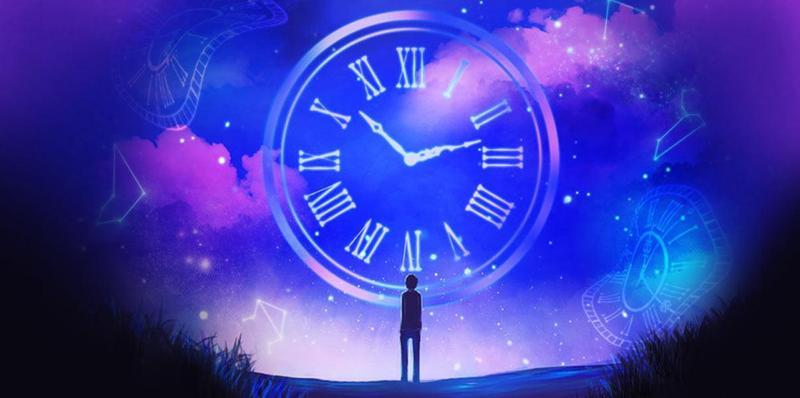Time Might Only Exist in Your Head. And Everyone Else’s
Time Might Only Exist in Your Head. And Everyone Else’s
In physics, they are all the same thing. But to you, me, and everyone else, time moves in one direction: from expectation, through experience, and into memory. This linearity is called the arrow of time, and some physicists believe it only progresses that way because humans, and other beings with similar neurological wiring, exist to observe its passing.
The question of time’s arrow is an old one. And to be clear, it’s not whether time exists, but what direction it moves. Many physicists believe it emerges when enough tiny particles—individually governed by the weird rules of quantum mechanics— interact, and start displaying behavior that can be explained using classical physics. But two scientists argue, in a paper published today in Annalen der physik—the same journal that published Einstein’s seminal articles on special and general relativity—that gravity isn’t strong enough to force every object in the universe to follow the same past»present»future direction. Instead, time’s arrow emerges from observers.
This all goes back to one of the biggest problems in physics, knitting together quantum and classical mechanics. In quantum mechanics, particles can have superposition. That is, one electron might exist in either of two places, and nobody can say for sure which until it is observed. Where that electron might be is represented by probability. Experimentally, this checks out.
However, the rules change when electrons start interacting with many objects—like a bunch of air molecules—or decohere into things like dust particles, airplanes, and baseballs. Classical mechanics take over, and gravity becomes important. “The position of electron, each atom, is governed by a probability,” says Yasunori Nomura, a physicist at UC Berkeley. But once they interact with larger objects, or become things like baseballs, those individual probabilities combine, and the odds of all those collective electrons having superposition decreases. That’s why you never see a baseball simultaneously disappear into the left fielder’s mitt while also soaring into the upper deck.
That moment when particle physics merge with classical mechanics is called decoherence. In terms of physics, it is when time’s direction becomes mathematically important. And so, most physicists believe time’s arrow emerges from decoherence.
The most prominent theory explaining decoherence is the Wheeler-DeWitt equation. It dates to 1965, when a physicist named John Wheeler had a layover at an airport in North Carolina. To pass the time, he asked his colleague Bryce DeWitt to meet him. They did what physicists do: talk theory and play with numbers. The two came up with an equation that, to Wheeler, erased the seams between quantum and classical mechanics (DeWitt was more ambivalent).
The theory isn’t perfect. But it is important, and most physicists agree that it is an important tool for understanding the weirdness underlying decoherence and so-called quantum gravity.
Here’s where it gets a bit weirder. Although the equation doesn’t include a variable for time (which isn’t all that weird. Time is something that can’t be measured in terms of itself, in physics it is measured as correlations between an object’s location … over time … anyway, it’s weird). But, it provides a framework for knitting the universe together.
However, the two scientists who penned this recent paper say that, in the Wheeler-DeWitt equation, gravity’s effects kick in too slowly to account for a universal arrow of time. “If you look at examples and do the math, the equation doesn’t explain how time’s direction emerges,” says Robert Lanza, a biologist, polymath, and co-author of the paper. (Lanza is the founder of biocentrism, a theory that space and time are constructs of biological sensory limitations.) In other words, those nimble quantum particles ought to be able to keep their property of superposition before gravity grabs hold. And if, say, gravity is too weak to hold an interaction between to molecules as they decohere into something larger, then there’s no way it can force them to move in the same direction, time-wise.
If that math doesn’t check out, that leaves the observer: Us. Time moves as it does because humans are biologically, neurologically, philosophically hardwired to experience it that way. It’s like a macro-scale version of Schrödinger’s cat. A faraway corner of the universe might be moving future to past. But the moment humans point a telescope in that direction, time conforms to the past-future flow. “”In his papers on relativity, Einstein showed that time was relative to the observer,” says Lanza. “Our paper takes this one step further, arguing that the observer actually creates it.”
This is not necessarily a new theory. Italian physicist Carlo Rovelli wrote about it in a paper published last year on ArXiv, an open physics website. Nor is it uncontroversial. Nomura says one flaw is figuring out how to measure whether this notion of “observer time” is real. “The answer depends on whether the concept of time can be defined mathematically without including observers in the system,” he says. The authors argue that there is no way to subtract the observer from any equation, since equations are by default performed and analyzed by people.
Nomura says the authors also fail to account for the fact that the entire universe exists in a medium called spacetime, “So when you talk about spacetime, you already talking about a decohered system.” He doesn’t go so far as to say the authors are wrong—physics remains an incomplete science—but he disagrees with the conclusions they draw from their math. And like time, interpretations of physics are all relative.
NICK STOCKTON /Wired
Be the first to post a message!
